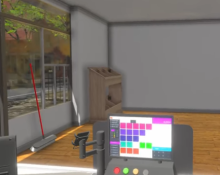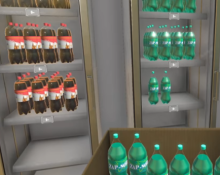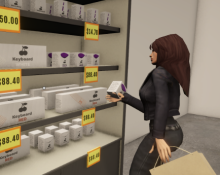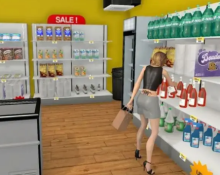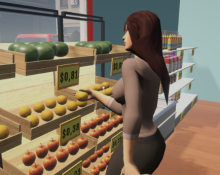Retail Store Simulator
Retail Store Simulator immerses players in the intricate world of retail store management, starting from a humble store and striving to become the best supermarket in town. The game combines detailed management strategies with real-time interaction, requiring players to fill shelves, serve customers and manage day-to-day operations. As the store manager, players select items to sell, from basic food items such as bread and milk to general merchandise. Each decision affects customer satisfaction and store revenue, making strategic planning essential.
Customization and customer interaction
One of the outstanding features of the game is the high level of customization. Players can design and furnish their own store, choosing a layout and decoration that will not only attract more customers, but also create an attractive shopping environment. The simulation extends to dynamic customer interaction, where players must respond to customer needs and preferences, adjust prices and provide high-quality service to build a loyal customer base.
Financial Management and Staffing
Efficient Operations and Financial Handling
Successful store management in Retail Store Simulator requires adept handling of finances. Players are responsible for processing payments, which can be made via bankcard or cash, and must accurately manage the cash register, including giving correct change. Financial acumen is tested further as players invest in store upgrades, expand their product lines, and manage the costs associated with running a growing retail business.
Building a Skilled Team
As the store grows, the workload can become too much for one person to handle. Players must hire and train employees, from cashiers to floor staff, who play critical roles in maintaining store operations, enhancing customer service, and increasing profits. Effective management includes scheduling staff appropriately to handle peak times and deploying sales strategies to maximize revenue.
Expansion and Upgrades
The ultimate goal in Retail Store Simulator is to evolve from a small store into a sprawling supermarket. This transition involves not only physical expansion but also significant upgrades in inventory, facilities, and technology. Achieving higher store levels unlocks additional items to stock and sell, enhancing the store’s attractiveness to customers. Each upgrade brings new challenges and opportunities, requiring continuous adaptation and innovation from the player.















